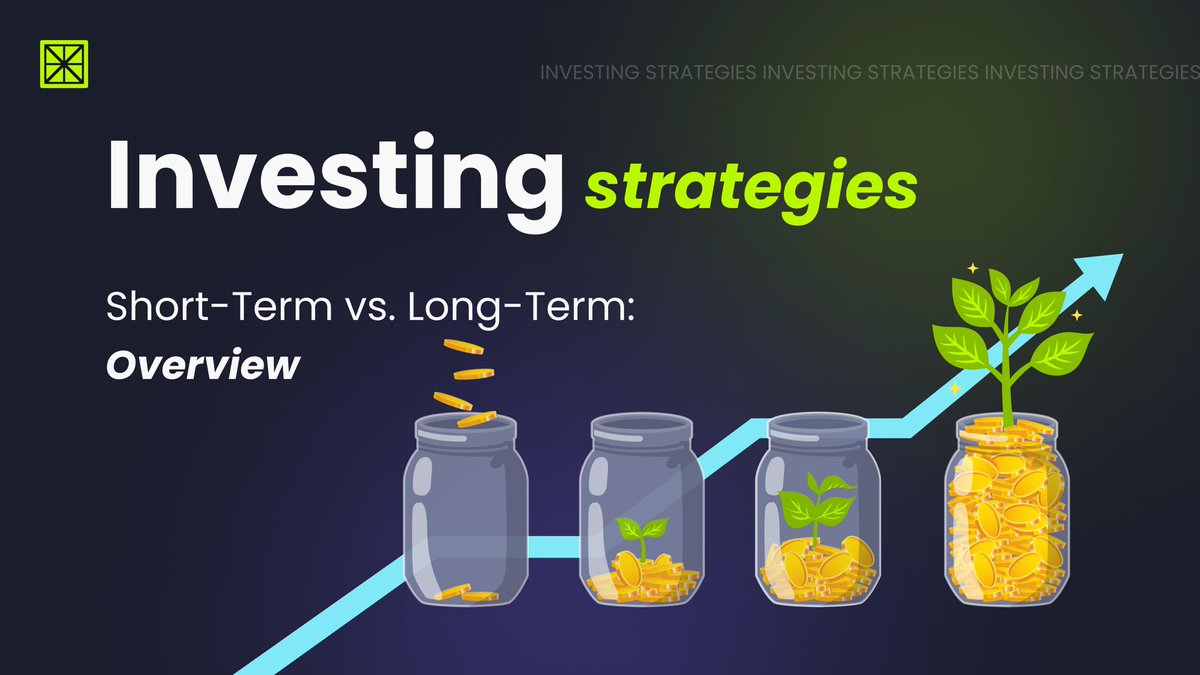Long-Term vs. Short-Term Crypto Investment Strategies

- Understanding the differences between long-term and short-term crypto investment strategies
- Pros and cons of long-term crypto investment strategies
- Benefits of short-term crypto investment strategies
- Risk management in long-term crypto investments
- Analyzing market trends for long-term vs. short-term crypto investments
- Tips for choosing the right investment strategy for your crypto portfolio
Understanding the differences between long-term and short-term crypto investment strategies
When it comes to investing in cryptocurrency, it is essential to understand the differences between long-term and short-term strategies. Long-term crypto investment involves holding onto digital assets for an extended period, typically years. This strategy is based on the belief that the value of the cryptocurrency will increase significantly over time. Investors who choose this approach are willing to weather market volatility and fluctuations in the short term for the potential of substantial gains in the future.
On the other hand, short-term crypto investment strategies involve buying and selling digital assets within a shorter timeframe, often days, weeks, or months. This approach relies on taking advantage of price fluctuations in the market to make quick profits. Short-term investors closely monitor market trends, news, and technical analysis to make informed decisions about when to buy and sell their cryptocurrencies.
Both long-term and short-term crypto investment strategies have their advantages and disadvantages. Long-term investing is less stressful and time-consuming, as it requires less active management of the portfolio. It also allows investors to benefit from the overall growth of the cryptocurrency market. However, it requires patience and a high tolerance for risk due to the potential for significant price fluctuations.
On the other hand, short-term investing can be more profitable in the short term, as investors can capitalize on price movements to generate quick returns. However, it is also riskier, as it is more susceptible to market volatility and requires constant monitoring and decision-making. Short-term investors need to be prepared to react quickly to changing market conditions to avoid losses.
Ultimately, the choice between long-term and short-term crypto investment strategies depends on your financial goals, risk tolerance, and investment timeline. Some investors may choose to combine both approaches to diversify their portfolio and mitigate risk. It is essential to carefully consider your investment objectives and conduct thorough research before deciding on the best strategy for you.
Pros and cons of long-term crypto investment strategies
When considering long-term crypto investment strategies, it is important to weigh the pros and cons before making a decision. One of the main advantages of a long-term approach is the potential for significant growth over time. By holding onto crypto assets for an extended period, investors can benefit from compound interest and capital appreciation as the market value of their holdings increases.
Another advantage of long-term crypto investment is the ability to ride out market volatility. While short-term traders may be affected by price fluctuations, long-term investors can take a more patient approach and wait for the market to stabilize over time.
However, there are also drawbacks to long-term crypto investment strategies. One potential risk is the lack of liquidity that comes with holding onto assets for an extended period. If market conditions change suddenly, investors may find it difficult to sell their holdings quickly.
Additionally, long-term investors may miss out on opportunities to profit from short-term price movements in the crypto market. While holding onto assets for an extended period can yield significant returns, it also means missing out on the potential for quick profits that short-term traders may take advantage of.
Benefits of short-term crypto investment strategies
Short-term crypto investment strategies offer a range of benefits for investors looking to capitalize on market fluctuations and generate quick profits. Some of the advantages of short-term crypto investments include:
- Quick Profits: Short-term strategies allow investors to take advantage of price movements in the crypto market to generate quick profits.
- Liquidity: Short-term investments are more liquid, allowing investors to easily buy and sell their assets as needed.
- Risk Management: Short-term strategies can help investors manage risk by allowing them to react quickly to market changes.
- Diversification: Short-term investments can help investors diversify their portfolios and spread risk across different assets.
- Market Timing: Short-term strategies allow investors to take advantage of short-term market trends and opportunities.
Overall, short-term crypto investment strategies can be a valuable tool for investors looking to maximize their returns in a dynamic and fast-paced market. By staying informed, being proactive, and making strategic decisions, investors can leverage short-term strategies to achieve their financial goals.
Risk management in long-term crypto investments
Investing in cryptocurrencies for the long term can be a lucrative strategy, but it also comes with its own set of risks that need to be managed effectively. One of the key aspects of risk management in long-term crypto investments is diversification. By spreading your investments across different cryptocurrencies, you can reduce the impact of any single asset underperforming. This can help protect your overall investment portfolio from significant losses.
Another important aspect of risk management in long-term crypto investments is staying informed about market trends and developments. Keeping up to date with news and analysis can help you make informed decisions about when to buy or sell your assets. It’s also essential to have a clear exit strategy in place in case the market takes a downturn. Setting stop-loss orders or having a predetermined point at which you will sell can help limit your losses and protect your investment capital.
Additionally, it’s crucial to be aware of the security risks associated with holding cryptocurrencies for the long term. Storing your assets in secure wallets and using two-factor authentication can help protect your investments from hacking and theft. Regularly updating your security measures and being cautious about sharing your private keys can also help mitigate these risks.
Overall, managing risks in long-term crypto investments requires a combination of diversification, staying informed, having an exit strategy, and prioritizing security. By taking these steps, you can help safeguard your investments and increase the likelihood of long-term success in the volatile world of cryptocurrencies.
Analyzing market trends for long-term vs. short-term crypto investments
When it comes to **analyzing** market trends for **long-term** versus **short-term** **crypto** investments, it is essential to consider various factors that can impact the **performance** of your **investment**. **Long-term** **investments** typically involve holding **crypto** assets for an extended period, often years, with the expectation of **significant** **growth** over time. On the other hand, **short-term** **investments** involve buying and selling **crypto** assets within a shorter timeframe, usually days, weeks, or months.
**Analyzing** market trends for **long-term** **crypto** **investments** requires a **focus** on **fundamental** **analysis**, such as **examining** the **technology** behind a **cryptocurrency**, the **team** **behind** the **project**, and the **market** **demand** for the **asset**. **Long-term** **investors** should also consider **macroeconomic** factors, **regulatory** developments, and **industry** trends that could **impact** the **value** of their **investments** over time.
**Short-term** **crypto** **investments**, on the other hand, are more **focused** on **technical** **analysis** and **market** **sentiment**. **Traders** **looking** to make **quick** **profits** often rely on **price** **charts**, **indicators**, and **trading** **patterns** to **predict** **short-term** **price** **movements**. **Market** **news**, **social** **media** **sentiment**, and **regulatory** **announcements** can also have a **significant** **impact** on **short-term** **crypto** **prices**.
Tips for choosing the right investment strategy for your crypto portfolio
When it comes to choosing the right investment strategy for your crypto portfolio, there are several factors to consider. Here are some tips to help you make an informed decision:
- Risk Tolerance: Before deciding on a strategy, assess your risk tolerance. If you are comfortable with volatility, a short-term investment approach may be suitable. On the other hand, if you prefer a more stable portfolio, a long-term strategy could be a better fit.
- Goals: Consider your investment goals when choosing a strategy. Are you looking to make quick profits, or are you aiming for sustained growth over time? Your goals will influence whether a short-term or long-term investment approach is more appropriate.
- Research: Conduct thorough research on different investment strategies before making a decision. Look into the historical performance of various crypto assets and analyze market trends to determine which strategy aligns best with your financial goals.
- Diversification: Diversifying your crypto portfolio can help mitigate risk and maximize returns. Consider spreading your investments across different crypto assets and investment strategies to build a well-rounded portfolio.
- Consultation: If you are unsure about which investment strategy to choose, consider seeking advice from a financial advisor or investment professional. They can provide personalized recommendations based on your financial situation and investment goals.
By taking these tips into consideration, you can select the investment strategy that is best suited to your crypto portfolio and financial objectives.



